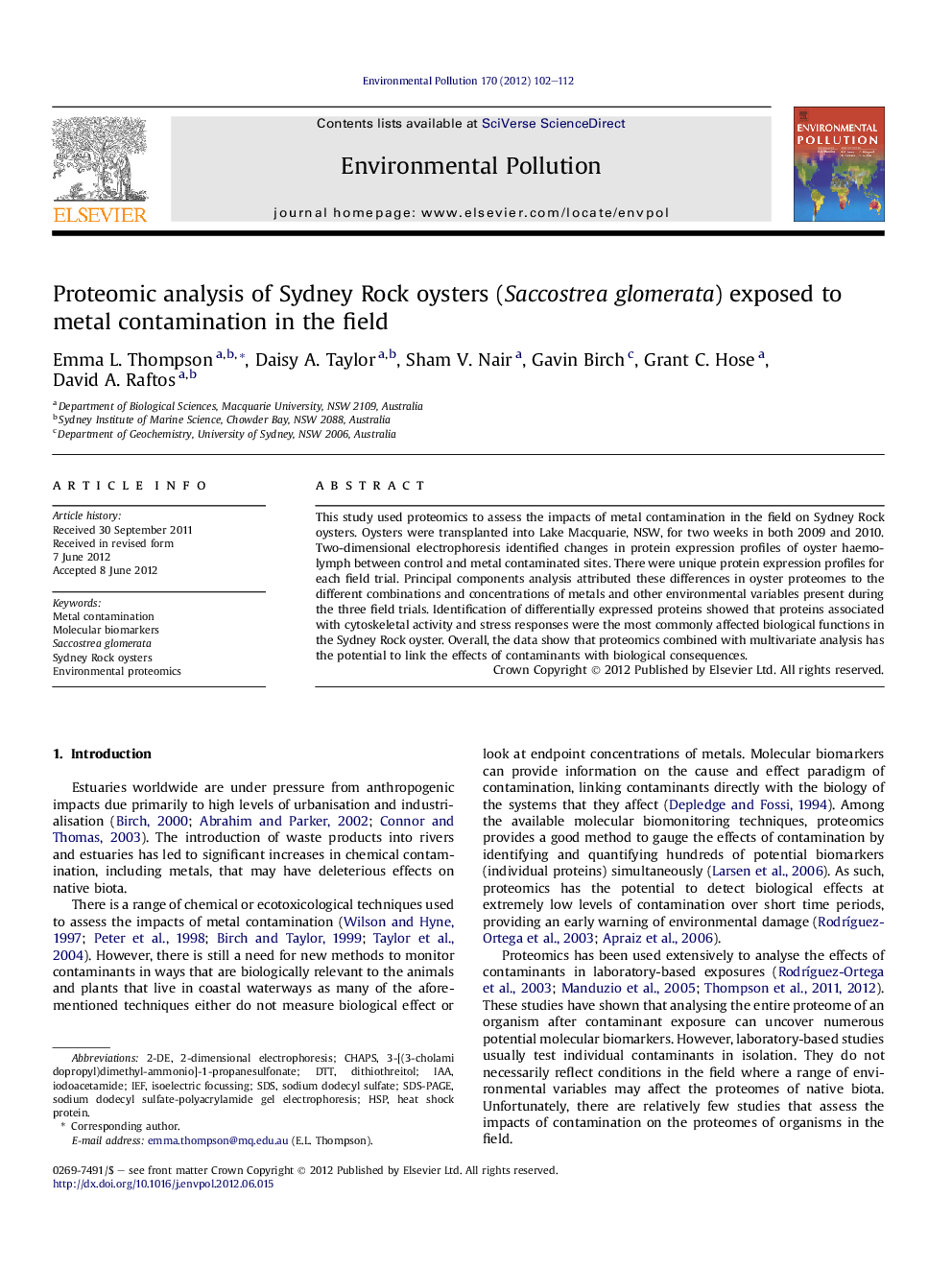| Article ID | Journal | Published Year | Pages | File Type |
|---|---|---|---|---|
| 4424759 | Environmental Pollution | 2012 | 11 Pages |
This study used proteomics to assess the impacts of metal contamination in the field on Sydney Rock oysters. Oysters were transplanted into Lake Macquarie, NSW, for two weeks in both 2009 and 2010. Two-dimensional electrophoresis identified changes in protein expression profiles of oyster haemolymph between control and metal contaminated sites. There were unique protein expression profiles for each field trial. Principal components analysis attributed these differences in oyster proteomes to the different combinations and concentrations of metals and other environmental variables present during the three field trials. Identification of differentially expressed proteins showed that proteins associated with cytoskeletal activity and stress responses were the most commonly affected biological functions in the Sydney Rock oyster. Overall, the data show that proteomics combined with multivariate analysis has the potential to link the effects of contaminants with biological consequences.
► Sydney Rock oyster haemolymph was analysed by proteomics after metal exposure in 3 field trials. ► 2-DE analysis was used to compare protein profiles between control and contaminated sites. ► Different protein expression profiles were revealed per field trial. ► Principal components analysis attributed profiles to different suites of metals and environmental variables per trial. ► The study highlights the need to do multiple field trials and to combine proteomic and enviro. data.
